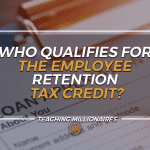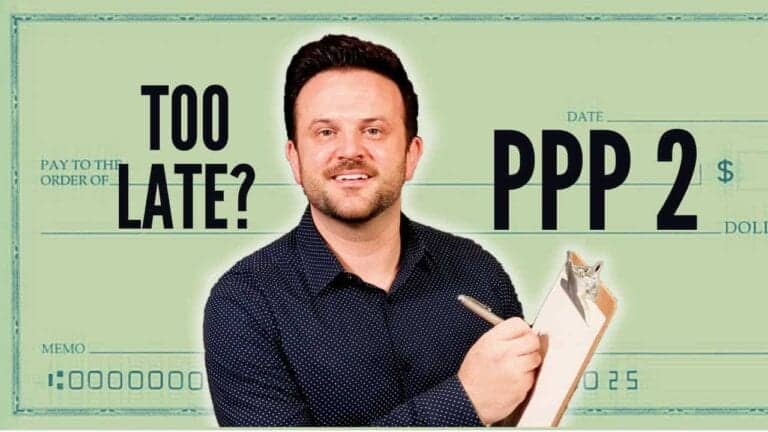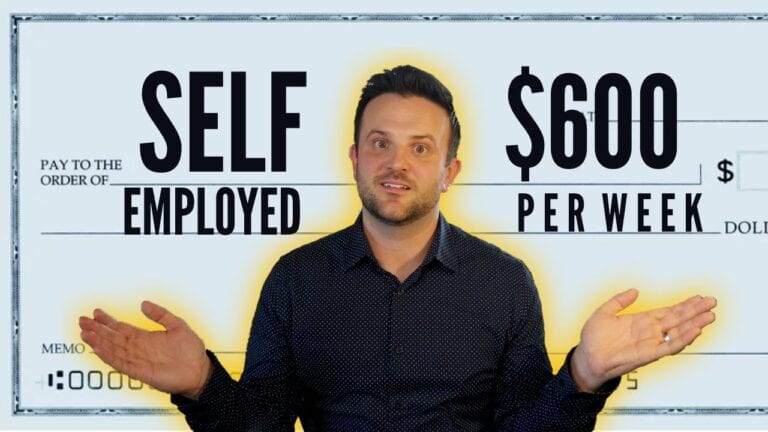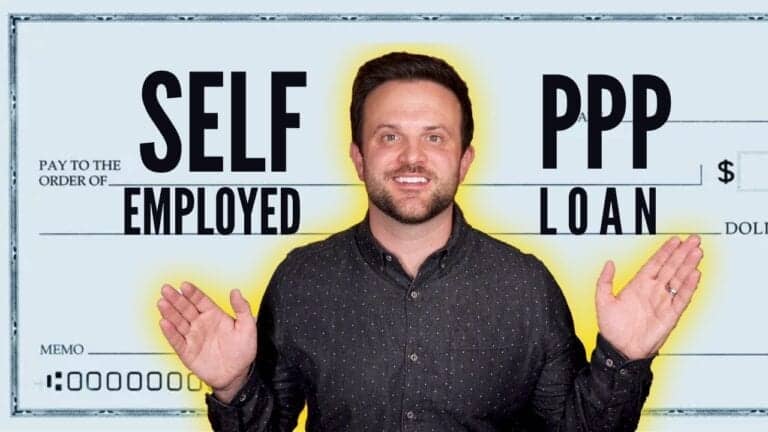Who Qualifies for the Employee Retention Tax Credit?
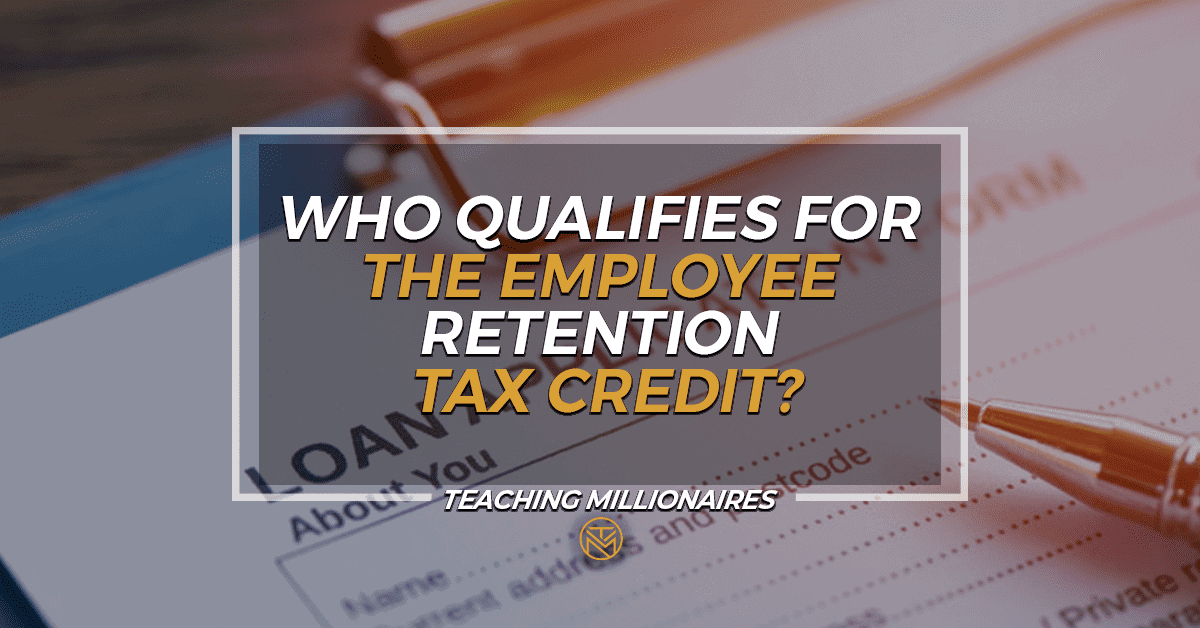
If you’ve heard about the Employee Retention Tax Credit, then you might be wondering who qualifies. There are three ways your business can qualify for this amazing tax credit. This article also gives you an idea of approximately how much you can expect if you qualify for the Employee Retention Credit ERC.
The Employee Retention Credit ERC is part of the CARES Act signed into law on March 27, 2020. However, many business owners still know very little about this government program. News about the Paycheck Protection Program PPP and EIDL made headlines, but the criteria for who qualifies for the Employee Retention Credit ERC remains unclear to many business owners.
“TeachingMillionaires.com has partnered with CardRatings for our coverage of credit card products. TeachingMillionaires.com and CardRatings may receive a commission from card issuers. Opinions, reviews, analyses & recommendations are the author’s alone, and have not been reviewed, endorsed or approved by any of these entities.”
Who Qualifies for the Employee Retention Tax Credit?
Can I Claim Employee Retention Credit and PPP?
I want to dispel the myth that if you got PPP you can NOT qualify for the Employee Retention Credit. Yes, originally, there was a rule like that, but the rules have changed multiple times.
To be clear, if you received PPP you can now retroactively go back and apply for the Employee Retention Credit. In fact, ERC might even be better than PPP for your business. PPP had maximum amounts with rules on how much you could use for payroll, while ERC allows you to get up to $26,000 per W2 employee.
Related Video Content: Employee Retention Credit and PPP

Who is Eligible for Employee Retention Payroll Tax Credit?
You are eligible for the Employee Retention Payroll Tax Credit if your business meets at least one of the following three criteria. Again, your business needs to fulfill only one of the criteria in order to be eligible for the Employee Retention Credit ERC:
- Revenue Qualifier – I want to address revenue reduction. Many business owners have heard that if your gross revenue was higher in 2020 or 2021 compared to 2019, then you don’t qualify for ERC. That is simply not true! The rules to qualify using revenue reduction for the time period March 13, 2020 – December 31, 2020 require businesses to have at least a 50% gross revenue reduction versus the same quarter in 2019.
For 2021, the IRS was more flexible, allowing for a 20% gross revenue reduction, quarter-by-quarter for Q1, Q2, Q3 compared to 2019. Therefore, if your business had a gross revenue reduction you indeed qualify. However, the Revenue Qualifier is only one of three potential criteria for ERC. - Partial or Full Suspension Qualifier – Even if you did better in gross receipts in 2020 and 2021 compared to 2019, you can still qualify for ERC if you had a partial or full shutdown because of governmental mandates. I’ve partnered with the ERC Specialists, and they are compiling a list of federal & state government closures. With this information, you can show that you qualify for the Employee Retention Credit ERC because your business had to partially or fully shutdown.
- Supply Chain Disruption Qualifier – Picture this … it’s March 2020, and the whole world shuts down. The government passes multiple stimulus packages, then hands the IRS something called the Employee Retention Tax Credit. Now, let’s be honest, the IRS did not have time to figure out all the details of this program.
For example, months after ERC was signed into law, the IRS updated the rules to clarify one of the stipulations to qualify. They stated businesses that were “nominally” impacted by a supply chain disruption could qualify for ERC. They clarified that “nominally” was defined as 10% or more.
Therefore, even if your business was an essential business that continued running and/or you did better in 2020 and 2021 compared to 2019, then so long as you were nominally impacted (10% or more) by supply chain disruption your business could qualify for the Employee Retention Payroll Tax Credit.
[elementor-template id=”6232″]
Supply Chain Disruption Examples
Since working with the ERC Specialists, I’ve come to understand supply chain disruption examples and the breadth and depth of this qualifier.
- Let’s say you’re a manufacturer, and you have a warehouse. Your manufacturing may have been more than 10% impacted because you couldn’t get the supplies you needed. Remember, we’re not talking about labor, but rather we’re talking about the supply chain.
Your warehouse might have stayed open, and your sales reps might have still been able to take calls. However, you weren’t able to do business in the same way because supply chain disruptions more than nominally impacted your day-to-day operations. - You’re a landscaper, and part of your work is to install sprinklers. Yet you weren’t able to get the sprinkler heads because of supply chain disruption. This is a nominal supply chain disruption example.
- Car dealerships that couldn’t get new vehicles because of the semiconductor chip storage. This is a nominal supply chain disruption example.
Overall, if you think you qualify based on supply chain disruption, then the ERC Specialists can help document that your business was indeed impacted more than 10% and get you back the payroll taxes you already paid the federal government.

Related Video Content: How to Apply for the Employee Retention Credit
[elementor-template id=”6189″]
Key Takeaways
The Employee Retention Credit ERC is available to many business owners including:
- Businesses that had a revenue reduction
- Businesses that got shut down during the pandemic
- Businesses that had a nominal disruption because of supply chain issues (even if they were able to stay open)
If you’ve been told by your accountant, CPA, or payroll company that you don’t qualify for the Employee Retention Credit ERC, then it’s in your best interest to have the ERC Specialists take a second look. They can determine if your business qualifies, process the paperwork with the IRS, and get you in line to get your money.
It’s very simple to answer these qualifying questions and see if you are eligible for ERC. My suggestion is to be honest with your numbers and gather the necessary paperwork – you need a detailed payroll report and 941 forms. Your payroll company should be able to provide you with that documentation.
If need additional insight, you can book a call with me.
[elementor-template id=”4878″]
Listen to Teaching Millionaires Podcast
As always, I’m Rich and until next time.
“TeachingMillionaires.com has partnered with CardRatings for our coverage of credit card products. TeachingMillionaires.com and CardRatings may receive a commission from card issuers. Opinions, reviews, analyses & recommendations are the author’s alone, and have not been reviewed, endorsed or approved by any of these entities. Responses are not provided or commissioned by the bank advertiser. Responses have not been reviewed, approved or otherwise endorsed by the bank advertiser. It is not the bank advertiser’s responsibility to ensure all posts and/or questions are answered. I am not a financial advisor. The information I share is for educational purposes only and shouldn’t be considered as certified financial or legal advice. It is imperative you conduct your own research. I am sharing my opinion only.”

